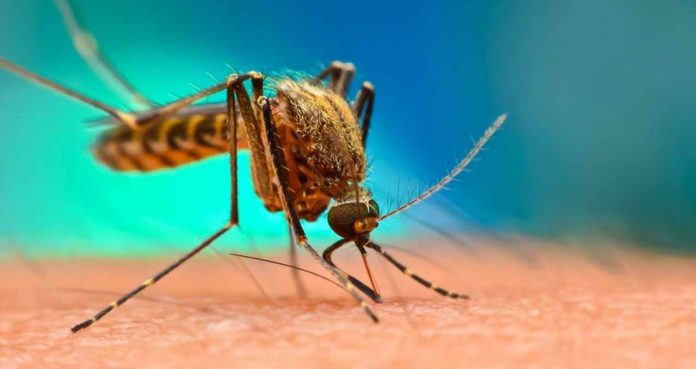A deadly mosquito-borne infection caused by Eastern Equine Encephalitis (EEE) has been confirmed in Monroe and Carbon Counties, Pennsylvania.
In the United States, EEE, which causes inflammation of the brain or encephalitis, has killed seven people so far. The virus can also spread to horses and birds.
Public health officials said that no people have been infected by EEE this year in Northeastern and Central Pennsylvania. However, it has been found in two horses in Carbon County and a pheasant in Pocono in Monroe County.
Peggy Hauschild, the owner of Horseback Riding Stables at Fernwood Resort in Bushkill, said she sprays her horses with mosquito repellent at least five times a day. She has become extra cautious now because EEE case have been confirmed in Poconos.
She said she spends eight hours a day just to maintain cleanliness, making sure there is no stagnant water for mosquitoes to breed.
Hauschild said, “Makes me feel terrible because it could happen to anybody. You can’t prevent the mosquitoes and the flies. You just have to take very good caution… keep everything very clean.”
“We have a pest control company come every other week and spray the entire field, the barn, every piece of property,” added Hauschild.
Infectious Disease Specialist at St. Luke’s Hospital in Monroe County Dr. Peter Ender advised looking for warning signs of the infection.
“It involves things like even a more persistent high-fever, a more severe headache, the development of confusion, sleepiness, some people go into a coma and may have seizures,” said Dr. Ender.
The U.S. Centers for Disease Control and Prevention (CDC) said that the best way to prevent the infection is by wearing long sleeves and pants, and using mosquito repellents, particularly containing DEET.
People infected by EEE start to show the signs and symptoms of the disease within three to ten days of the mosquito bite. Currently, there is no cure for EEE. EEE kills more than 30 percent of people who get infected, according to the CDC. If left untreated, EEE may cause severe brain damage and eventually death.























